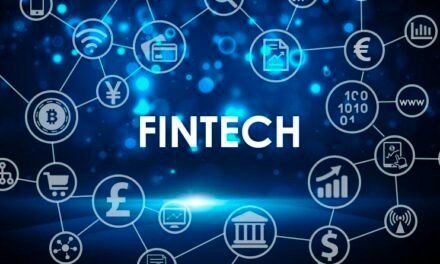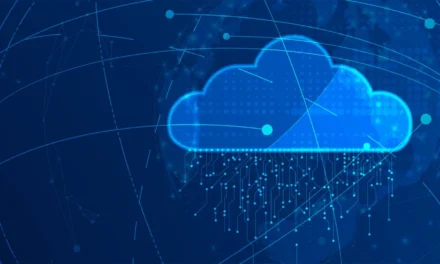Let’s call it what we want, but the Fourth Industrial Revolution is here. This revolution is characterized by digitalization, artificial intelligence, and machine learning. It is bringing dramatic changes in robotics, 3D printing, nanotechnology, biotechnology, materials science, among other advancements.
The technological impact is not new; it triggered the previous three industrial revolutions. What makes this one different is the qualitative magnitude of the changes, the speed at which they occur, and the impossibility of halting it. Additionally, the integration capacity between technologies, knowledge, and academic disciplines is unprecedented. Intelligence is no longer solely human as computers can now produce human-like knowledge.
The impact will also extend to daily life. AI will create new ecosystems, such as ambient computing, with personal assistants like Siri being an early example.
The changes are so significant that they will open new processes within the public sector, modify work relationships, and raise previously unknown issues.
When addressing these processes, media often highlights their applicability to specific economic or social spheres. Less focus is placed on the public administrations, which will need to change their operational methods and address new areas of attention. Here are some key considerations:
- The Fourth Industrial Revolution as a Source of Inequality: The revolution may increase inequality due to the difficulty of accessing the necessary technologies (more powerful and functional, thus more expensive) and their outcomes. Countries where the welfare state is not fully established, like ours, need to include new elements related to the industrial revolution in their redistribution portfolios, affecting public education, healthcare, and other state actions ensuring optimal living conditions.
- Regulation as a Current Battlefield: It’s often said that the US invents and Europe regulates, potentially a neoliberal mantra to favor deregulation. However, regulatory approaches need to evolve. The time taken to develop the European AI regulation exceeds reasonable limits given the rapid technological changes. Regulation must adapt quickly to prevent technological standards from overriding public interest, while recognizing the unstoppable nature of scientific and technological development.
- The Influence of Large Tech Companies: Major tech companies like Facebook, Google, Amazon, and Microsoft pose political and economic risks. These companies, with annual revenues surpassing the GDP of many countries, are shaping a new society with minimal staff and low production costs. Governments may need to consider measures to break up these companies to protect the public interest. This is complicated by the ease of relocating activities and the rise of virtual presences, impacting tax supervision and revenue.
- Citizen Empowerment and Government Adaptation: Technology from the Fourth Industrial Revolution will empower citizens, potentially enhancing public participation. However, this coincides with a decline in democratic quality, leading to lower voting participation. Governments incorporating these technological advancements will gain better knowledge of citizens’ lives, aiding transformative public policies. Data can improve urban mobility, safety, energy use, and pollution reduction, contributing to more suitable city designs.
- Regulating Algorithms: Regulating algorithms, such as those for autonomous vehicles, is essential for ensuring safety and functionality, akin to other scientific fields. This involves monitoring algorithms for stability, functionality, and retrospective analysis to prevent future disasters. Current legislative processes must adapt to fulfill regulatory roles more efficiently, requiring highly qualified personnel. Regulating algorithms also addresses broader issues like genome editing.
- New Payment Methods: The revolution includes decentralized payment methods, affecting public money and monetary policy. Technologies like blockchain operate parallel to public currency, based on trust and limited availability. This decentralization hinders authorities’ ability to track money flows and impacts tax analysis, prompting measures like the UK’s Snooper Act for indirect economic transaction examination. Cooperative mechanisms between states will be necessary to ensure tax flows from transactions.
- Impact on Work and Production: The revolution will significantly affect jobs and production, widening the gap between manual and intellectual workers and between labor-dependent individuals and capital owners. Some jobs will disappear, and new ones will emerge, emphasizing the need for adaptable public education and science systems. The decline of manual labor in the GDP will challenge traditional social protection systems and tax collection. Governments will need to integrate individuals skilled in new technologies into public administration.
- Challenges in Personal Data Management: The global market for personal data, generated through daily activities, poses significant challenges. Companies storing this data, like cloud providers, can recognize images and sounds, determine IPs, and engage in deep learning to interpret human needs. This data’s free transmission leads to substantial profits for these companies, prompting debates on tax mechanisms for the benefits derived from users’ data.
- University’s Role in Knowledge Generation and Transfer: Universities must play a leading role in generating, transmitting, and transferring knowledge. Public universities, the main knowledge generators, face difficulties in effective transmission. The focus should be on adapting teaching methods to engage students and ensure knowledge acquisition. This involves questioning whether traditional academic publications are the best means of knowledge transfer or if alternative approaches are needed to make research more accessible to society and productive sectors.
Conclusion
The Fourth Industrial Revolution is here to stay. Societies and governments must adapt to the changes brought by scientific and technological advancements. Integrating these changes into governmental operations will shape public policies and maintain the social state as outlined in the Constitution. Failure to adapt will result in being overwhelmed by these transformative forces.




